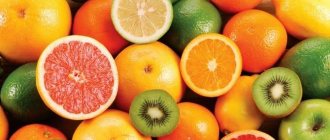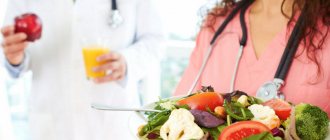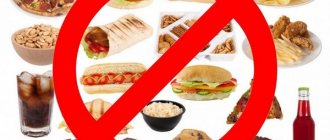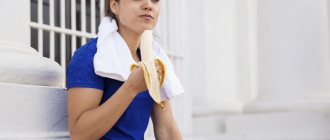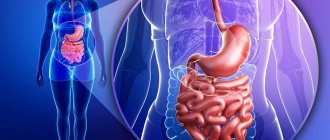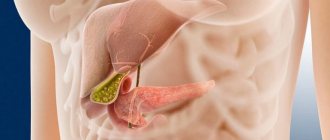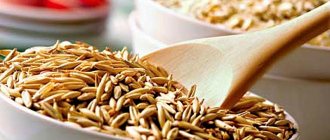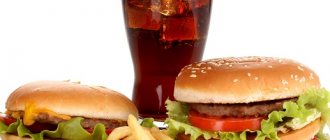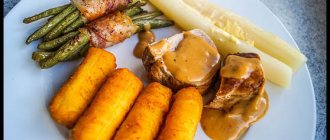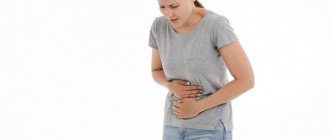With hepatitis C, most of the liver tissue is affected by the inflammatory process, which in chronic form can lead to cirrhosis of the liver. You can support the injured organ and not burden healthy hepatocytes with the help of nutrition. The diet for hepatitis C is aimed at restoring smooth liver function and alleviating the patient’s general condition.
Proper nutrition for hepatitis C is the main support for an injured liver
Why you need to diet
The pathology is characterized by inflammation of most of the liver tissue. If the disease has acquired a chronic form, then there is a danger of transition to cirrhosis of the liver, and these are irreversible changes in the organ. Therefore, you should support her and not overload her with heavy food.
Proper nutrition for hepatitis C is a prerequisite, and not just a doctor’s recommendation. Diet is needed to normalize the functions of the organ and to improve the general condition of the patient.
Inflamed organ tissues negatively affect the physiological process of chemical and physical effects on food and the absorption of nutrients into the blood. To facilitate the digestion of food by the diseased organ, a gentle diet for hepatitis C has been developed, table No. 5. The diet has great restrictions, but is balanced and varied. The diet has the following features:
- For cooking, it is better to take products that contain a small amount of cholesterol, essential oils, fat and oxalic acid.
- The food chosen is only mushy, liquid or highly crushed.
- Food should be baked, boiled or steamed. Frying food should be completely avoided.
- You should not drink alcohol (especially if it is a toxic form of the disease), smoke, or eat stale food or canned food.
- Eat in small portions, but not less than every 3 hours.
- Food is consumed only warm; very hot or cold foods such as drinks with boiling water or ice cream are prohibited.
The menu should be varied so that the body receives everything it needs for recovery and treatment during the day. So that the body functions normally, and the liver does not suffer and functions normally. It is important not to forget about drinking plenty of fluids; the patient must drink 2.5 liters of water per day. At the same time, doctors recommend significantly limiting salt intake.
It is better to eat at home, cook yourself, and not use the services of catering establishments. The diet should include a variety of foods, more vegetable and garden products, dairy, and cereals. Remember that the number of calories a person should consume per day is no more than 3000.
Nutrition for hepatitis B
Patients diagnosed with hepatitis B also need to adhere to a number of rules. If the disease is chronic, the patient must follow the doctor's instructions for a long time or even for the rest of his life.
In this case, diet therapy helps reduce the load on the digestive tract, and primarily on the liver. A patient with hepatitis B needs to eat at intervals of 3-4 hours, the number of meals should be from 4 to 6. It is split meals that help stop the pathological process and restore liver tissue. Calorie content does not exceed 2800 calories, the ratio of protein, fat and carbohydrates is 90-350-100 grams.
It is necessary to take into account the temperature of consumed food and drinks. They must be warm. Cold and too hot food has a detrimental effect on the mucous membrane of the digestive tract and causes active release of enzymes.
The menu is based on dietary table No. 5, the diet allows you to normalize the functioning of the filtering organ and the entire digestive tract. If the patient does not strive to strictly adhere to the doctor’s instructions, the following inevitably develops:
- liver failure;
- toxic lesions;
- poisoning.
The daily diet is 3 main meals and 2-3 snacks. Confectionery, fried, fatty, and spicy products are contraindicated. When consuming cooking fats, the patient is at risk of exacerbation of hepatitis. You also need to reduce the amount of table salt to a minimum.
It is recommended to maintain a drinking regime; during the day, drink 2-3 liters of clean water without gas. In addition to water, they drink herbal infusions, decoctions of medicinal plants, berry fruit drinks, and fruit compotes.
Prohibitions in the diet
The diet strongly excludes foods that contribute to stagnation of bile in the ducts, which are difficult for the diseased organ and the digestive system as a whole, and also have an irritating effect.
What products should not be eaten at all, or it is recommended to limit their consumption:
- Fatty broths made from meat or fatty fish are prohibited;
- You should not include high-fat dairy products in your diet;
- Smoked meat and fish of fatty species are not allowed - they should be completely excluded in order to prevent an exacerbation of the disease;
- it is important to avoid canned and pickled products – cucumbers and tomatoes, mushrooms, olives, sauerkraut and other products with vinegar and other acids;
- spices with a pungent taste cannot be used for preparing dishes - here they include mustard, mayonnaise and ketchup;
- All foods with a spicy taste are prohibited for consumption - onions, horseradish, radishes, corn, sorrel and other types of greens, radishes, garlic, etc.;
- Baking from yeast and butter dough is prohibited;
- sweets in the form of chocolate, high-fat cream, ice cream are prohibited;
- exclude carbonated drinks, tea, coffee, and alcoholic liquids from the diet;
- cow oil is allowed in small quantities, while palm oil is completely prohibited;
- eggs with a hard yolk or fried in a frying pan;
- Yachka and pearl barley are prohibited - you cannot cook porridge from them or add them to soup;
- Fruits with acid are prohibited - apples (can be eaten baked), citrus fruits.
Ginger and root-based seasonings need to be removed from the menu. It provokes disturbances in the functioning of liver cells and causes severe abdominal pain.
Varieties
| Type of diet (table) | Indications | Nutritional Features |
| 5P | Prescribed for stomach ulcers | Maximum amount of kcal – 2900 |
| 5L/F | Used for liver diseases | Daily norm - up to 2600 kcal |
| 5Ш | Prescribed for exacerbation of postcholecystectomy syndrome | No more than 2100 kcal per day is allowed |
| 5P | Chronic form of pancreatitis | Daily calorie content of food - 1800 kcal |
| 5a | Gallstone disease and cholecystitis. Hepatitis all forms | All food should be neither cold nor hot. It is necessary to eat small portions at least 5 times a day |
| 5 | Hepatitis in chronic and acute form. Presence of stones in the gall bladder. Cholecystitis | Boiled food, small meals several times a day |
- Table No. 5A - creates maximum liver rest, is prescribed for acute hepatitis and cholecystitis and exacerbation of chronic diseases (hepatitis, cholecystitis and gastrointestinal tract), liver cirrhosis in the compensation stage.
- 5B - with severe exacerbation of chronic hepatitis and cholecystitis, liver cirrhosis with moderate failure, with peptic ulcers and gastritis, which are combined with hepatitis or cholecystitis.
- 5P - for chronic pancreatitis in the recovery stage or without exacerbation. Normalizes the function of the pancreas, reduces the excitability of the gallbladder, spares the stomach, liver and intestines.
- 5GA is a hypoallergenic diet based on the basic Table No. 5, but additionally excludes all seafood, fish, caviar, eggs, processed cheeses, ice cream, bell peppers, pickles, sauerkraut, peanuts, sesame seeds, hazelnuts, sunflower seeds, citrus fruits, strawberries , apricots, peaches, raspberries, grapes, pomegranates, pineapple, melon, sea buckthorn, kiwi, semolina and wheat cereals, whole milk, flavored fruit drinks, cakes, chocolate, marshmallows, marshmallows.
- 5SH - postcholecystectomy syndrome with the presence of duodenitis and exacerbation of chronic gastritis. It provides maximum sparing of the digestive organs and reduction of bile secretion.
- 5F or 5 L/F - prescribed for hypotension of the gallbladder with symptoms of bile stagnation and in the state after cholecystectomy with bile stagnation in the liver. Nutrition is aimed at enhancing bile secretion and improving intestinal circulation of bile, so the diet includes polyunsaturated fatty acids and proteins.
- 5P - for dumping syndrome after resection for an ulcer.
About what is allowed
When developing a menu, the patient must take into account what foods he can eat without fear of harming the damaged organ. Permitted products have restorative effects for liver cells and ease their processing. The menu is in perfect harmony with the conservative treatment of the disease and significantly reduces the toxic load on the diseased organ. What foods can you eat without restrictions:
- Beverages. Weak tea, fresh or dried fruit compote, jelly, fruit drink, freshly squeezed juice, infusions of rose hips and chamomile support the body and improve well-being. You can drink clean water without restrictions.
- Any broth. Borscht or cabbage soup, only lean, beetroot soup, milk soup with noodles.
- Porridge. Cook them in a semi-liquid consistency, cook them with water or a mixture with milk - 50/50. You can diversify your porridge with cereal pudding or soufflé.
- You can take any pasta with low-fat and mild gravy.
- Meat is a must in the patient’s diet, because the body requires protein. Lean varieties are allowed - veal, poultry, only without skin, rabbit.
- Fish. Low-fat varieties will be useful; fatty salmon can be eaten rarely and as a snack.
- Bread. You can eat rye, wheat or bran bread, but not fresh, but slightly dried. Approach baking with caution; you can enjoy dried biscuits, bread, biscuits, and puff pastries without margarine.
- Milk. Any dairy product with a minimum amount of fat. Take yogurt without various additives. You can use them to make casseroles and soufflés. Sour cream and feta cheese are allowed, but in small quantities.
- Vegetable component of the diet. Garden products containing starch are useful: potatoes, pumpkin, carrots, zucchini, cauliflower and Chinese cabbage, beets. Use them to make puree or any dishes with crushed pulp, baked or steamed. Lettuce leaves and peppers are allowed in small quantities. Cucumbers, broccoli, celery, avocado, and beans in pods are allowed.
- Berries and fruits. Take ripe and soft apples and make a casserole with the addition of cottage cheese. You can eat pomegranate, prunes, one banana a day, watermelon and dried fruits. It is allowed to eat a little bit of melon and pineapple. Other fruits should also be consumed in small quantities, making puree, jelly or mousse from them.
- Eggs. Protein boiled or in an omelet is useful. And the yolk is strictly limited, only half as an addition to the dish.
- It is permissible to consume butter up to 30 g, refined vegetable oil up to 15 g, and limit olive oil completely.
- Snacks. They can be consumed selectively and in small quantities. Vegetable salads, jellied fish, squash caviar, and vinaigrette from the permitted varieties are suitable here. Sometimes you are allowed to eat soaked, lightly salted herring.
- Sauces. They need to be prepared from vegetable or dairy products, but not spicy. Fruit sauces won't hurt either. Soy sauce only in minimal quantities. Dill and parsley are allowed.
- Sweets. Consume sugar sparingly. You can bake protein-based meringues and marshmallows, and eat some marmalade. Dissolve jam in tea or water. Berry dumplings are not prohibited, but do not add eggs to the dough.
This light diet and strict restrictions will be good helpers in the fight against the disease. Over time, the diet will seem to you the only right solution, and will not irritate you. And from the permitted list of products, you can diversify the menu as much as possible and make the dishes tasty and appetizing.
What to eat and what not to eat
The list of products that can be used for hepatitis C is given in the table.
| Product group | Scroll |
| Fiber-rich foods that improve digestive function |
|
| Nuts | It is recommended to give preference to almonds rich in riboflavin, Mg, fiber, Fe, Ca. Other nuts also contain these nutritional elements, but in much smaller quantities. In addition, these products are an ideal source of protein. However, coconuts are contraindicated. Recommended amount: 5-6 pieces every other day |
| Cereals | Nutritionists recommend consuming oatmeal (whole grains) more often. It is rich in fiber, has a low glycemic index, and contains a number of essential vitamins and minerals. Couscous and brown rice have similar properties. It is advisable to eat dishes from one of the listed cereals daily. Chia and quinoa can be additional sources of protein. |
| Berries | It is better to give preference to blueberries and cranberries. It has been proven that eating these berries helps prevent urinary tract infections, pathologies of the cardiovascular system and liver cancer. Berries are a low-calorie source of vitamin C and other antioxidants and potassium. They have an anti-inflammatory effect. What you can eat:
Berries are allowed daily. Can be replaced with dried fruits, fresh fruits |
| Fish | Foreign nutritionists recommend eating salmon, but no more than once a week. However, domestic experts prefer low-fat varieties of fish:
Fish is the main source of omega-3s, which normalize the lipid profile and prevent the formation of atherosclerotic plaques. It is believed that eating fish eliminates the symptoms of autoimmune inflammation, prevents memory problems, and eliminates symptoms of depression. |
| Soya beans | Soy is a source of protein and fiber that does not contain cholesterol or animal fats. More than 3,000 studies confirm the anti-carcinogenic effect of the product. Recommended consumption 4-5 times a week:
|
| Tea | Both black and green tea varieties are beneficial. However, the drink should be prepared not from bagged tea, but from leaf tea. |
| Milk and dairy products | Source of calcium. But it is recommended to eat low-fat foods. To normalize digestion, yoghurts are recommended, ideally self-made from homemade milk or organic |
| Vegetables | Almost all vegetables are allowed, but it is recommended to pay special attention to pumpkin and spinach. Pumpkin is rich in carotenes, antioxidants, B vitamins, folic acid, and contains fiber. Vegetables should be included in at least one meal daily. You should consume freshly squeezed vegetable juices and replace them with fruit juices, which contain sugar. If you consume enough vegetables, you should drink vegetable juice 1-2 times a week |
| Poultry products | Eggs (in limited quantities), chicken fillet (without bones and skin) are useful. It is a source of protein necessary for the regeneration of liver cells |
A diet designed to accelerate liver regeneration in patients with hepatitis C includes certain restrictions. Foods that should not be eaten if you have HCV and its complications are listed below.
| Food and Beverage Group | Short description |
| Alcohol | Contraindicated even in minimal quantities, regardless of the percentage of alcohol |
| Other drinks | Prohibited:
|
| Certain types of meat, fish and poultry | Varieties with a high content of animal fats are contraindicated, regardless of the method of preparation. |
| Seasonings | Do not use hot seasonings or spices when preparing dishes. Allowed a limited amount of allspice, bay leaves (in vegetable broths) |
| Sauces | Contraindicated due to high fat content |
| By-products | Liver, heart, kidneys, blood sausage and other meat by-products are not allowed |
| Other dishes and products | Eating is contraindicated:
|
| First meal | Soups cooked with meat broth and mushroom soups are contraindicated. |
There are also certain requirements for foods that can be eaten. First of all, this concerns the cooking mode. Avoid frying, especially with vegetable oil or animal fat. It is not recommended to use marinades and sauces, spices with a pronounced smell and taste.
Approximate menu for the week
To maintain proper nutrition for hepatitis C, it is advisable to take care of this in advance. It is best to create a rough menu for the week ahead and try to stick to it. This will be done by an infectious disease doctor or nutritionist. The sample menu table looks like this:
| Day | Meal time | Recommended dishes |
| Monday | Breakfast | Oatmeal with pumpkin and any permitted drink |
| Snack | Cottage cheese casserole or cheesecakes cooked in the oven | |
| Dinner | broth with lean meatballs, vegetable stew, herbal infusion | |
| Afternoon snack | vegetable soufflé | |
| Dinner | steamed chicken fillet cutlets, mashed potatoes, compote | |
| For the night | Before going to bed, if you are treating hepatitis, you need to drink a glass of low-fat kefir | |
| Tuesday | Breakfast | semolina porridge with skim milk |
| Snack | baked apple | |
| Dinner | borscht with low-fat broth, steamed dumplings and buckwheat | |
| Afternoon snack | Curd dumplings seasoned with sour cream | |
| Dinner | any baked variety | |
| For the night | low fat yogurt without fillers | |
| Wednesday | Breakfast | buckwheat porridge with a piece of unsalted cheese, tea |
| Snack | cottage cheese casserole and herbal tea | |
| Dinner | lean soup, pilaf with veal, still mineral water | |
| Afternoon snack | soft pear | |
| Dinner | steamed fish cutlets, vegetable soufflé | |
| For the night | yogurt | |
| Thursday | Breakfast | oatmeal with milk, tea |
| Snack | apple and banana salad | |
| Dinner | lean soup with rice cereal, lean meat soufflé | |
| Afternoon snack | pumpkin stuffed with cottage cheese, any freshly squeezed fruit juice | |
| Dinner | baked lean fish, vegetables | |
| For the night | low-fat kefir | |
| Friday | Breakfast | buckwheat porridge with milk |
| Snack | tea with oatmeal cookies | |
| Dinner | cabbage soup with fresh cabbage, boiled fish, vegetables | |
| Afternoon snack | oat smoothie with the addition of some red berry | |
| Dinner | veal meatballs, any porridge | |
| For the night | kefir | |
| Saturday | Breakfast | low-fat cottage cheese with sour cream |
| Snack | biscuits with tea | |
| Dinner | borscht with veal, casserole of vegetables and unsalted cheese | |
| Afternoon snack | banana | |
| Dinner | chicken in a pot with tomatoes and potatoes | |
| For the night | yogurt | |
| Sunday | Breakfast | cheesecakes cooked in the oven, tea with milk |
| Snack | biscuits with rosehip infusion | |
| Dinner | creamy chicken soup, vegetable casserole | |
| Afternoon snack | finely chopped fresh vegetables without oil | |
| Dinner | lazy cabbage rolls | |
| For the night | yogurt |
Dishes should be varied and eaten fresh. It is important to follow a diet, that is, eat at a certain time, and do not take long breaks between meals.
Fasting days
With steadily progressing acute hepatitis, additional fasting days are necessary. This should be done approximately once every 10 days, unless there are contraindications. The following options are excellent: Sugar day. It contains up to 180 g of easily digestible carbohydrates and provides the body with approximately 600–750 kilocalories. It consists of the following: after intervals of 2.5–3 hours, the patient drinks 250 milliliters of moderately hot (no more than 55°) tea, to which 35 grams of sugar are added (it is better that it is unrefined). Diabetes mellitus is a contraindication, and if kidney function is impaired, fluid intake is strictly controlled.
Curd fasting day: mix 600 g of dietary non-acidic cottage cheese with 50 g of sour cream 10–15% fat and eat in four doses (additionally, you are allowed to drink half a liter of rosehip decoction); Eat 400 g of cottage cheese with two teaspoons of sugar during the day, you can wash it down with kefir; Consume 500 g of cottage cheese and 400 g of steamed pitted prunes in 6 doses.
Rice-compote day. Boil 50 g of rice cereal with the addition of 100 g of sugar. In the morning, after 2.5–3 hours, drink 150 ml of apple compote, and divide the porridge for lunch and dinner.
I wrote more about fasting days in one of the articles here
Delicious recipes
The first is a variety of soups, which should be lean or based on broth from lean varieties of fish and meat. Lenten soups made from cereals and noodles are also useful.
Meatball soup
Grind through minced veal or chicken. Prepare two pans, in one the meatballs will be cooked, and in the second - the soup. Peel carrots, onions, potatoes and chop. Place all this in a pan of boiling water. Throw in the washed rice. Put egg white into the minced meat, add salt and form into balls. Boil them in a separate container until cooked. Place the meatballs in the pan where the rice and vegetables are cooked and let cool.
Pumpkin soup with oatmeal
Cut the pumpkin pulp into pieces, place in a saucepan, cover with cold water and cook until half cooked. Then place the pumpkin pieces in a separate bowl; the broth will be useful later. In a frying pan, simmer the oatmeal with butter and pumpkin broth, adding more as needed. When the flakes are ready, add pumpkin and simmer until completely soft. Grind the finished mixture in a blender until pureed. Dilute with the broth to the required consistency, add salt and chopped herbs.
Mashed potatoes
Puree differs from regular puree in that no milk is added to it. Boil the potatoes until tender, pour the broth into a separate bowl. Put some cow butter in a pan and add the broth, mash the potatoes to give them the consistency of mashed potatoes. This puree will be more beneficial for the liver than milk.
Vegetable casserole with chicken
Cut the carrots, half a fork of cauliflower and an onion into small pieces. Simmer the vegetable stock over low heat with cow's butter, but not until cooked. Roll 300 g of minced chicken. Place it on a baking sheet and place vegetables on top. Bake in the oven.
Stuffed cabbage rolls are lazy
You will need 500 g of minced chicken, 300 g of cabbage, onions and carrots. Grind the vegetables or chop them finely. Mix all this with minced meat, add salt. By the way, minced meat can be from any type of meat, but it is lean. Pour a little tomato juice into the baking dish and distribute it over the entire surface. Form cutlets into the shape of cabbage rolls and place on a baking sheet. Cover the cabbage rolls with tomato juice. Cook in the oven.
Cookies with apples and dried fruits
If you have hepatitis, you need to limit sweets, but you can afford this dish. To do this, you need to stock up on the following food: apples, prunes, flour, a glass of freshly squeezed apple-banana juice, butter and salt. Prepared in the following order:
- Pour boiling water over the prunes for a few minutes.
- Grate apples without peel.
- Finely chop the prunes.
- Mix all the ingredients in one bowl and knead the dough so that it does not stick to your hands.
- Make balls out of it and press them down a little on a baking sheet to make cookies in shape.
- Bake for a short time, about 20 minutes.
The liver is an important organ for the body and its health and proper functioning is a guarantee of good health. Therefore, the treatment of any disease, and especially a viral one, requires great responsibility from the patient himself. The treatment period lasts a long time and it is necessary to strictly follow this diet throughout. Only then can we hope for a complete cure.
Diet for hepatitis C
Hepatitis C is characterized by a severe course; the disease does not manifest itself for a long time. Often, the disease, like hepatitis B, is diagnosed accidentally during a routine examination or diagnosis for another disease.
To protect liver cells, the patient avoids increased food load, which inhibits the restoration of the filtering organ. It is recommended not to eat carbohydrates, reduce protein foods and reduce calories. In case of severe disease, they move to table No. 5.
Strictly prohibited:
- trans fats;
- refined oils;
- refractory fats.
The diet should include a sufficient amount of fresh vegetables and fruits, berries and herbs. Natural unrefined vegetable oils are added to dishes. It is good to include vegetable protein in the menu, namely seeds, beans, and nuts. Drink more than two liters of clean water per day.
In general, the recommendations are similar to those for the treatment of hepatitis A, B. Treatment lasts a long time, gentle nutrition must be followed even after recovery. Restrictions apply to canned food, semi-finished products, and smoked products.
Alcohol consumption
Drinking alcohol during illness leads to negative consequences, since alcohol has a detrimental effect on liver tissue, destroying its cells (hepatocytes).
The degree of their damage depends on the amount of ethanol entering the body per day, and each group of people is given a specific dose:
- for men – from 60 to 80 ml;
- women - from 30 to 45 ml;
- for teenagers – up to 15 ml.
As alcohol breaks down, it forms acetaldehyde, which can form strong compounds with liver proteins. All this supports the negative changes in the parenchyma caused by hepatitis.
In addition, alcohol weakens the immune system, which significantly complicates the body’s process of fighting a viral infection.
The functionality of the endocrine system is disrupted, as a result of which the liver cells cease to receive the microelements and vitamins necessary for recovery.
Non-alcoholic beer contains a minimum amount of alcohol – 0.5% . However, even such content can cause damage to the body during hepatitis. Therefore, this drink should not be consumed in this case.
